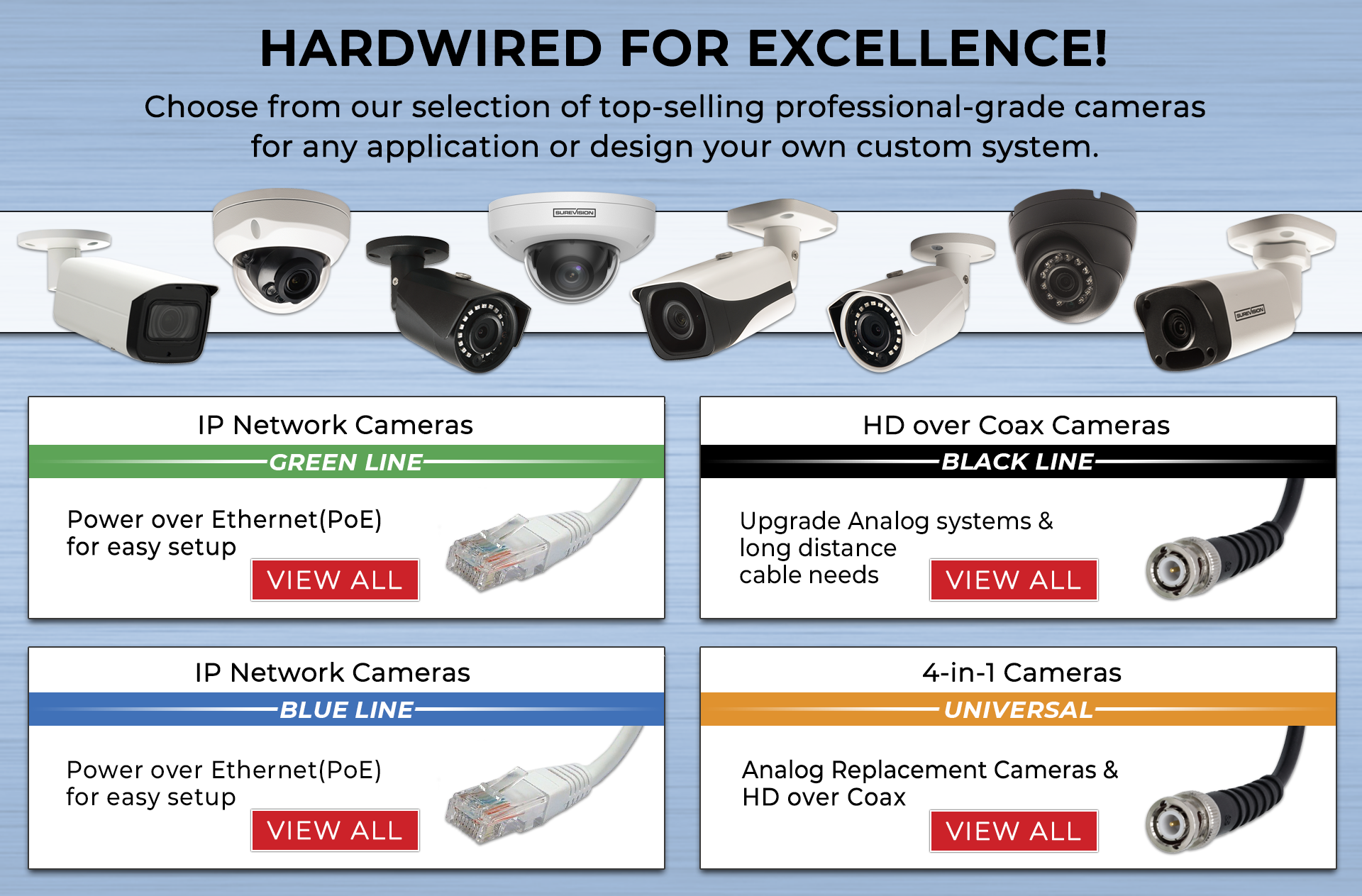Comparing Security Camera Technologies - Analog vs. HD Over Coax vs. IP Cameras
Jul 7, 2024
Security Camera Technology Comparisons
Choosing the right camera technology is crucial for setting up an efficient and effective surveillance system. With a variety of options available, it can be challenging to decide between analog, HD over Coax, and IP cameras. In this article, we'll dive deep into the differences, advantages, and suitable applications for each of these technologies to help you make an informed decision. At CCTV Security Pros, we offer several technology types so you can choose which is best for our application.
What are Analog Cameras?
Features of Analog Cameras
Analog cameras, the longstanding stalwarts in the world of surveillance, transmit video signals in a format that can be received by a television or other receiver without a digital converter. These cameras use coaxial cables for transmission and are known for their straightforward, no-frills operation.
Pros and Cons of Analog Security Cameras
Pros:
- Low cost
- Simple installation
- Wide compatibility with various systems
Cons:
- Limited resolution
- Susceptibility to interference
- Lack of advanced features like video analytics and license plate recognition
What are HD Over Coax Security Cameras?
Features of HD Over Coax Cameras
HD over Coax cameras represent a significant upgrade over traditional analog by providing high-definition video capabilities over the same coaxial cable infrastructure. This technology supports resolutions of up to 1080p without needing new wiring.
Pros and Cons of HD Over Coax Cameras
Pros:
- Better image quality than analog
- Uses existing coaxial cable setups
- Cost-effective compared to IP cameras
Cons:
- Higher cost than conventional analog
- Higher digital HD resolutions compared to analog
- Still not as flexible as IP cameras
What are IP Security Cameras?
Features of IP Cameras
IP cameras, or Internet Protocol cameras, use a digital stream to send video over a network, allowing for higher resolutions and more sophisticated features like remote viewing from anywhere via the internet.
Pros and Cons of IP Camera
Pros:
- Highest available resolution
- Support for advanced features and analytics
- Flexible and scalable
Cons:
- Higher initial setup cost
- More complex infrastructure and maintenance
Comparing the Technologies
Image Quality
When it comes to image quality, IP cameras are superior, offering resolutions that can go up to 4K or even higher. HD over Coax offers a middle ground with up to 4K resolution, while analog typically provides the lowest resolution of up to 1000 lines of resolution.
Cost Considerations
Analog cameras are generally the most cost-effective, particularly for those with existing infrastructures. IP cameras, while initially more expensive, can potentially offer lower long-term costs due to reduced maintenance and no need for specialized cabling.
Flexibility and Scalability
IP cameras provide significant advantages in terms of flexibility and scalability, allowing for easy additions or adjustments to the networked system. Both types of coax-based cameras lack this adaptability.
Use Cases for Each Type of Camera
Where to Use Analog Cameras
Ideal for small-scale setups where high resolution is not critical, such as in homes or small businesses.
Ideal Scenarios for HD Over Coax
Best utilized in scenarios where higher resolution is necessary but the existing coaxial infrastructure is to be retained, such as upgrades at schools or retail stores.
Perfect Fit for IP Cameras
Suited for infrastructure projects where highest image quality, extensive coverage, and advanced features are essential.
Transitioning Between Technologies
Upgrading from Analog to HD Over Coax
This transition is straightforward due to the use of the same cabling infrastructure, making it a cost-effective upgrade path.
Switching from HD Over Coax to IP
Switching to an IP-based system involves changing to CAT5 cable but yields significant benefits in image quality and system flexibility.
Future Trends in Camera Technologies
As technology advances, the trend is moving towards more intelligent, networked systems with higher resolutions and analytical capabilities. The future of surveillance cameras is likely to see a greater emphasis on AI and IoT integrations.
Understanding the differences between analog, HD over Coax, and IP cameras is key to choosing the right surveillance solution. Each has its strengths and ideal use cases, so consider your specific needs in terms of image quality, system complexity, and budget before making a decision.
FAQs
- What is the main advantage of IP cameras over HD Over Coax?
- IP cameras offer higher resolutions and more advanced networking and analytics capabilities.
- Can I use my existing coaxial cables for a new IP camera system?
- Generally, IP cameras require network cabling like Ethernet. However, special adapters are available that allow IP cameras to operate over coaxial cables.
- Are HD Over Coact cameras compatible with old analog systems?
- Yes, HD Over Coax cameras can use the same coaxial cables and are often designed to be backward-compatible with analog systems.
- What should I consider when upgrading from analog to HD Over Coax?
- Consider the necessity for higher resolution and whether the existing cabling can support the new cameras.
- Is it cost-effective to switch from HD Over Coax to IP cameras?
- While more expensive upfront, the long-term benefits of greater flexibility, higher resolution, and advanced features might justify the initial investment for many users.







